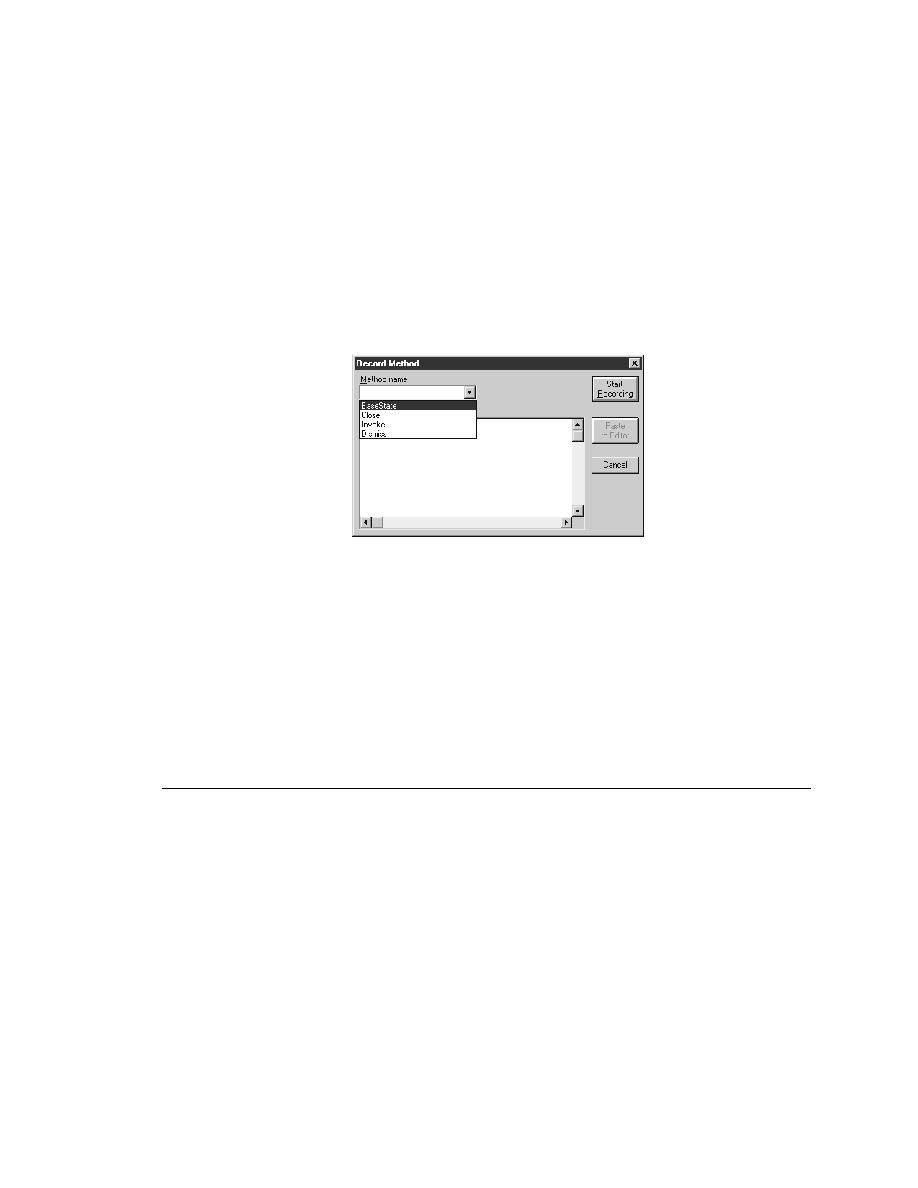
<< Recovery System - Adding to the default base state | Recovery System - Overriding the default processing >>
Recovery System - Overriding the default recovery system
<< Recovery System - Adding to the default base state | Recovery System - Overriding the default processing >>
window.
a method for a class or window declaration.
and select BaseState from the drop-down list.
window, which indicates that you can begin recording the BaseState
method. The Status field flashes the word Recording.
pushbutton on the Record Status window.
contains the 4Test code you've just recorded.
BaseState method in the declaration for your main window.
application's base state. It also specifies what SilkTest does whenever: